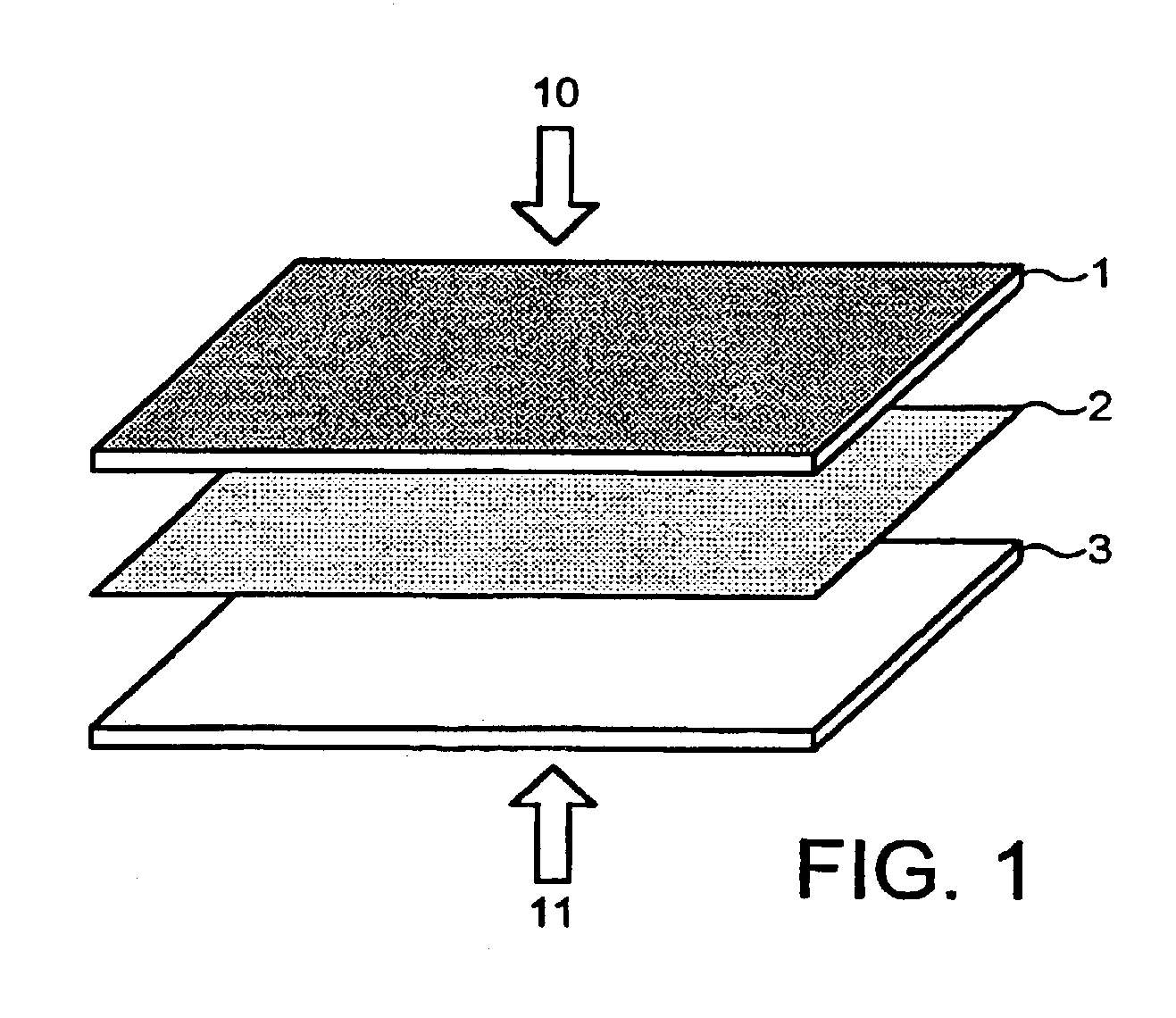Dressing
a technology of dressing and glazed surface, applied in the field of dressing, can solve the problems of preventing the exudates transported within the dressing beneath the glazed surface from returning to the wound face in any significant quantity, and achieve the effect of convenient and effective dressing production
- Summary
- Abstract
- Description
- Claims
- Application Information
AI Technical Summary
Benefits of technology
Problems solved by technology
Method used
Image
Examples
Embodiment Construction
[0033]With reference to FIG. 1, a dressing according to an embodiment of the invention is shown, comprising a polyester fibre sheet 1 of directional fibres of varying filament diameters, the sheet having a thickness of 1.7 mm. The outer surface 10 is heat treated to produce a “glazed” effect, i.e. the fibres at the surface are bound together by the heat producing a smooth surface out of which individual fibres are hindered from extending.
[0034]The polyester fibres are attached to a central support polycotton woven fabric sheet 2, which is 0.2 mm thick. They are attached to the central support by conventional needle punching, which produces a felt fabric.
[0035]The polycotton support fabric 2 is woven from 65% polyester and 35% cotton threads to give a density of 90 ends and 65 picks after scouring. Apart from the scouring (washing) after weaving, the support fabric will have no additional dying or processing. The scouring process removes residues thereby reducing optical brilliance a...
PUM
| Property | Measurement | Unit |
|---|---|---|
| diameter | aaaaa | aaaaa |
| thickness | aaaaa | aaaaa |
| thickness | aaaaa | aaaaa |
Abstract
Description
Claims
Application Information
 Login to View More
Login to View More - R&D
- Intellectual Property
- Life Sciences
- Materials
- Tech Scout
- Unparalleled Data Quality
- Higher Quality Content
- 60% Fewer Hallucinations
Browse by: Latest US Patents, China's latest patents, Technical Efficacy Thesaurus, Application Domain, Technology Topic, Popular Technical Reports.
© 2025 PatSnap. All rights reserved.Legal|Privacy policy|Modern Slavery Act Transparency Statement|Sitemap|About US| Contact US: help@patsnap.com


